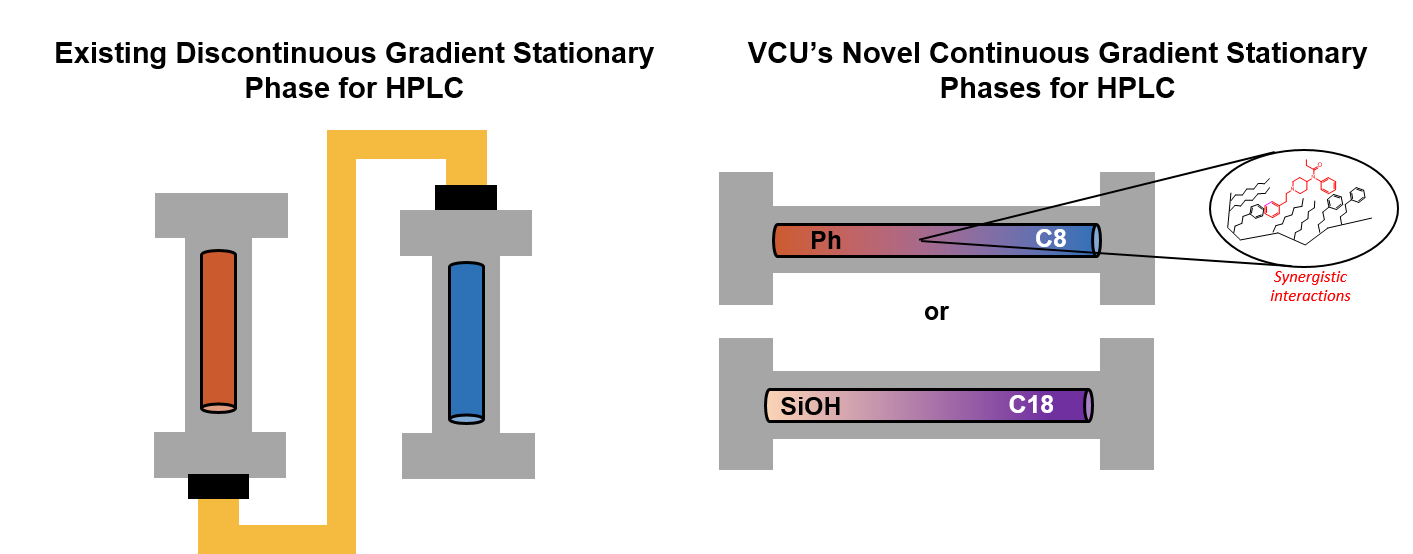HPLC Methodologies
Enhanced Methods for Liquid Chromatography
Continuous Stationary Phase Gradients
Virginia Commonwealth University researchers have developed a novel gradient method for high performance liquid chromatography (HPLC). Existing technologies for HPLCs currently use discontinuous gradients, which have increased void volume due to the columns needing to be connected to their adjacent ones. Increased void volume can result in column inefficiency and can also lead to asymmetric peaks. VCU researchers have aimed to revise this methodology in order to address these ongoing issues.
The developed technology utilizes a continuous stationary phase gradient on a packed column. Not only does this technology have the ability to be more efficient by reducing the void volume of current liquid chromatography methods, it also has the ability to improve their separation performance. This allows for the separation of complex mixtures in a variety of fields, making this a valuable tool for any research lab looking to refine/enhance their current process.
Figure 1: The existing methodologies for HPLCs (as seen on the left) use discontinuous gradients. VCU’s developed methodology (as seen on the right) uses continuous gradients
The technology
Unlike current systems, VCU’s developed technology utilizes a continuous methodology. This eliminates the need for serially connected columns and thereby reduces the void volume of the overall system. This allows the system to be more efficient and for cooperative interactions to take place between solutes and multiple functional groups that are in close proximity on the stationary phase. These cooperative interactions are what allow the system to be more selective during separations. This method can be used on a packed column for reversed phase HPLCs, using destructive or constructive methodologies, or hydrophilic interaction liquid chromatography (HILIC). VCU is seeking market insights on the commercialization of this versatile continuous stationary phase gradient and welcomes interest from any potential partners and licensees.
Figure 2: Comparison between traditional discontinuous HPLC method (A) and VCU’s developed continuous HPLC method (B). Not only does the continuous method allow for shorter analysis time, it also allows for improved resolution.
